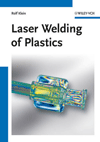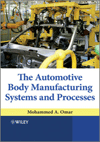The three-dimensional welding station replaces conventional and robo-tically manipulated re-sistance spot-welding, and stitch-and-seam pro-cesses. Cycle times are up to six times faster. Optic systems move the laser beam rapidly from one weld location to the next, allowing quick access to weld and part locations.
The ability to move the beam eliminates complex mechanisms for workpiece motion. Work-holding fixtures can be more simple in design. The noncon- tact welding and minimal mechanical movement of the remote welders means little chance of part shifting caused by bumping or vi-bration. The no-tool weld-ing and single-side access allows one laser beam to reach locations previously requiring multiple hard-tooled, electrode-type spot-welding stations on oppo-site sides of assembly lines. The result is valuable floor-space savings, simple changeover for multiple parts and reduced maintenance requirements.
By rotating and tilting the mirrors, and adjusting beam focal positions and power output, the remote welders provide a multifocus laser that eliminates large spatial movements. There are no tools to move and fewer mechanical parts, and the part, once loaded, remains stationary.
The remote welding layout consists of a mezzanine-type structure, with a DC-035 diffusion-cooled CO2 laser mounted above. The optics system is located on the under- side of the raised platform. This arrangement leaves floor space open for part loading and unloading.
The remote laser welder has a work envelope of 1 meter by 1 meter in the X and Y axes, and approximately 0.75 meter in the Z axis. This working range, along with the laser-equipped remote welders, allows a single remote welder to replace several robotic stations. This results in significant savings in capital investment and floor space.
The system eliminates dedicated, hard- fixtured, work-holding and tooling. Through program downloading, the remote welders can run multiple part configurations with quick changeovers. The laser can weld various materials, including steels, stainless steels, aluminum and some plated materials, as well as dissimilar materials.
A PC and software package programs the remote laser welders. All application parameters, including optics positioning, laser focus and output power, are controlled and monitored by the single unit. The software suite includes a number of available weld geometries--linear, circle, open circle and wave.
The diffusion-cooled laser's availability was critical to the project's success. The diffusion-cooled DC-035 CO2 laser provides 3.5 kilowatts of power and features a resonator design with correcting optics and waveguide structure. The diffusion-cooled design needs no complex gas circulation or cooling systems to maintain correct operating temperatures. Therefore, a more compact laser head and reduced maintenance requirements result. The gas system consists of a 10-liter, premixed bottle of gas that requires changing only at 2,000-hour intervals.
David Thal, vice president of engineering, and Michael Bembenek, manager of advanced technology, led the development activities. Thal comments, "As a supplier of major underbody modules, we realized the future potential of the remote laser welders at the onset. From the prod- uct design and welding process perspective, the system has enormous potential. We believe the major bene-fits of this technology will be realized when the inherent advantages of remote welders are incorporated into the product design cycle. This will maximize opportunities in the product design and weld process areas."
For more information on remote laser welding, call Rofin-Sinar Inc. at 734-455-5400, visit www.rofin-sinar.com.



